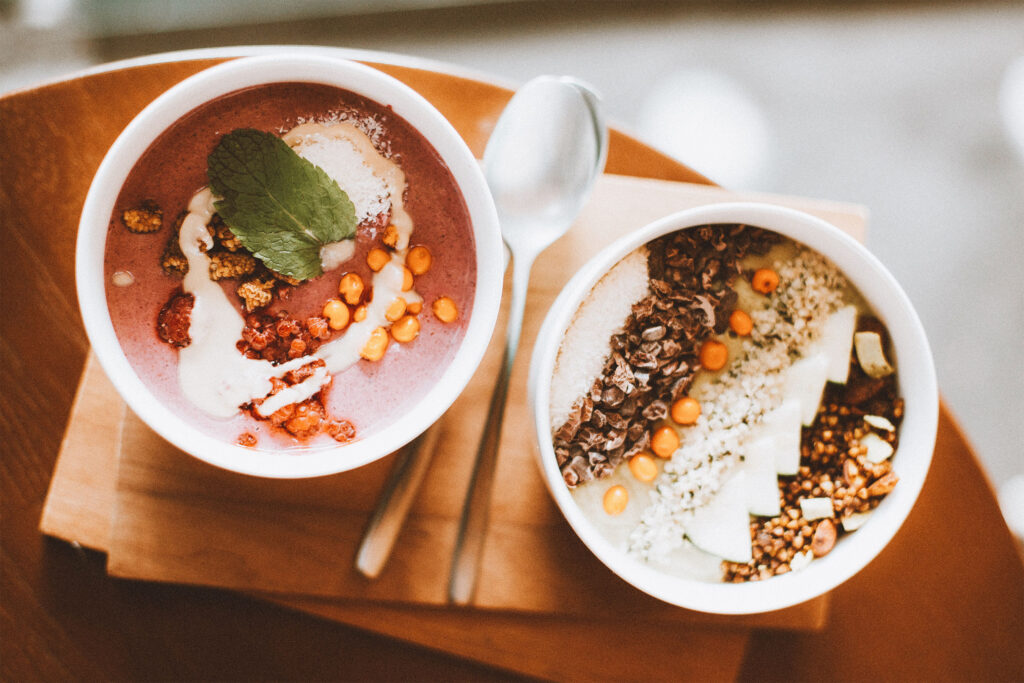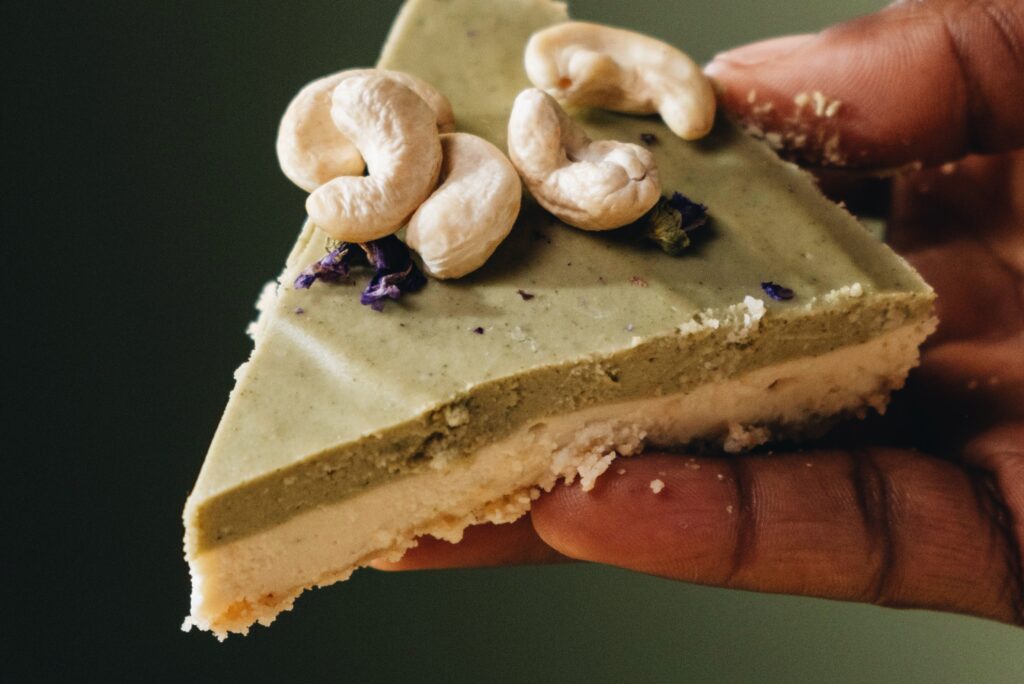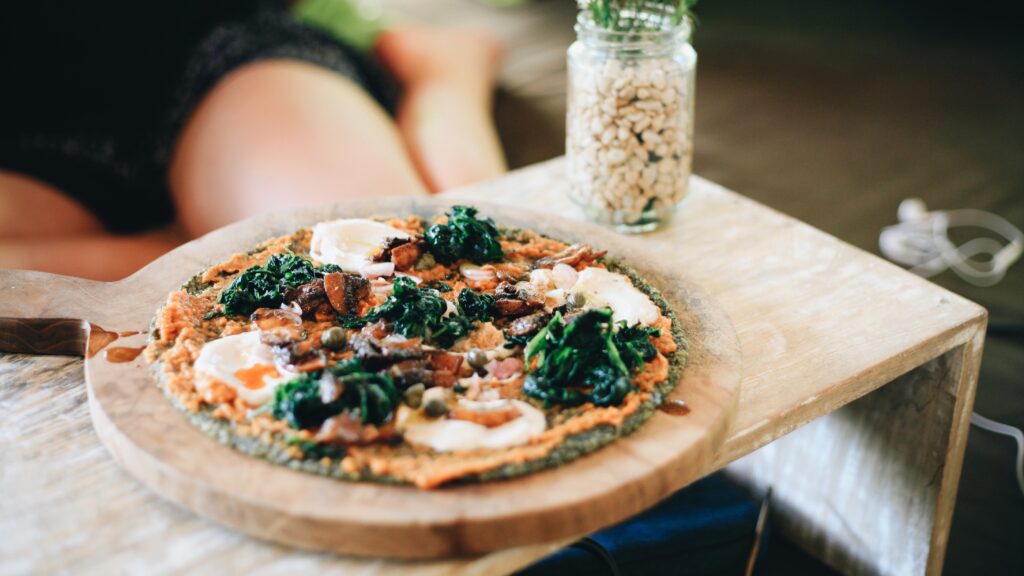A raw food diet and a plant-based diet may seem similar, as many foods are eaten on both diets: vegetables, fruits, nuts, and seeds. One crucial component of the raw food diet, however, is only eating food cooked below 118 degrees Fahrenheit. At that temperature, food will be either lukewarm or cold. Therefore, the raw vegan diet is a plant-based diet in which food is also cooked at no more than 118 degrees.
While many raw foodists posit that the diet is the healthiest way to eat, it’s important to note that food still contains nutritional benefits when both cooked and raw. What matters more is that a person receives the nutrients their body needs.
That being said, some cooking methods can lower the nutritional content of food. For example, a 2009 study published in the Journal of Zhejiang University on how different cooking methods impacted the nutritive quality of broccoli, found that every method except for steaming “caused a dramatic loss of vitamin C,” as well as a loss of soluble protein. Raw fruits and vegetables are more nutrient-rich, and so the raw vegan diet can be nutrient-rich.

History of the Raw Vegan Diet
Our diets have evolved throughout history. Prior to consistent access to fuel, humans ate many raw foods. However, regular access to fuel allowed humans to cook over fires, and eventually, to cook using grills, stoves, and microwaves. Widespread access to refrigeration in the early 20th century also impacted what we eat.
Also in the earlier 20th century, the raw food diet had a renaissance. One famous proponent, Swiss physician and nutritionist Maximilian Bircher-Benner, believed that eating primarily raw foods was the healthiest diet. According to the New York Academy of Medicine, he wrote, “Fifty percent of the daily intake should consist of raw, unfired fruits, nuts and tastefully prepared vegetables…”
Bircher-Benner and other supporters of the raw food diet believed that cooking foods destroyed nutritive qualities and believed that poor nutrition caused incurable diseases.
The writings of Bircher-Benner, as well as other advocates of the raw food diet, have led some to believe that it cures illness. In the present day, rumors persist that a raw vegan diet can cure everything from breast cancer to eczema. But, no scientific studies conclusively provide evidence.
Certainly, eating a lot of fruits, vegetables, and nuts comes with benefits. Some cooking methods reduce the amount of nutrients in vegetables. For example, spinach and broccoli are both good sources of vitamin C. However, they lose nutrients through cooking. Boiling either of these vegetables can reduce their amount of vitamin C by 50 percent. In other words, you get the most vitamin C from raw spinach or broccoli.
A healthy diet, which includes getting adequate nutrients, is a factor in preventing many health conditions. But there is no evidence to support the claim that there is a direct connection between a raw food diet, or a raw vegan diet, and curing disease.

What Can You Eat on a Raw Vegan Diet?
A raw vegan diet is a plant-based diet in which only foods which have never been cooked are consumed. The raw vegan diet consists of:
- Fruits (juiced, dehydrated, and dried as well)
- Vegetables (juiced, dehydrated, and dried as well)
- Nuts
- Seeds, like hemp and chia
- Sprouted grains
- Sprouted legumes
- Tofu
- Nut milks, such as almond milk or cashew milk
- Nut butters containing no additional additives
- Seaweed
- Cold-pressed oils
- Raw maple syrup, raw cacao powder, vinegar, and unpasteurized raw soy sauce
- Fermented foods like sauerkraut, miso and kimchi
- Nutritional yeast, which is used in vegan cheeses (as well as other uses)
On the raw vegan diet, food must not be cooked over 118 degrees Fahrenheit, meaning it is not cooked, steamed, sauteed or roasted. Raw vegan adherents do not eat animal products; they also eschew baked foods, pasta, and coffee.
Some alcohol may be consumed, such as vegan wine. However, some wines use animal products such as gelatin or egg whites as processing agents. Distilled alcohol, including rum and whiskey, is not raw.
A note on sprouted grains and legumes: The word “sprouted” means the seeds have begun to grow but have not grown leaves or flowered yet. Sprouted grains include quinoa and unhulled farro. On the raw vegan diet, you can also eat sprouted legumes, such as lentils and pinto beans. Sprouting occurs when the grains or beans are soaked in warm water.
Additionally, some people may confuse the Paleo diet with the raw food diet by assuming that our ancestors primarily ate raw food. While it is true that humans ate many raw foods as a matter of practicality throughout most of history, these two diets are different. On the Paleo diet, you only eat foods that were believed to have been available to our ancestors during the Paleolithic area. But on the raw food diet, all foods can be eaten so long as they are raw.

What Are the Health Benefits of a Raw Vegan Diet?
There are many benefits to consider before adopting a raw vegan diet. Here are some of them:
It’s high in nutrient-rich fruits and vegetables
Fruits and vegetables contain a wide variety of vitamins and minerals. A diet that is high in fruits and vegetables is associated with lower risk of heart disease and stroke, lower blood pressure, and a lower risk of digestive problems, according to Harvard T.H. Chan School of Public Health. You can get the best benefits by eating a “rainbow” of vegetables and fruits, as nutritionists advise.
It’s low in processed foods
There are many different ways that foods can be considered “processed.” It may be helpful to think of a continuum. On one end are frozen meals, pre-made meals, and ready-to-eat foods like fruit snacks, cookies, or soda. These foods frequently contain preservatives, additives, or flavors, as well as added sugars and sodium. In the middle are foods that may have some preservatives, additives, or flavors added (such as pasta sauce). And on the other end are minimally processed foods, such as canned tomatoes and frozen fruits and vegetables. On a raw vegan diet, you’re likely to be eating only minimally processed foods, and avoid the sodium and added sugars endemic to more heavily processed foods.
You can get your protein from sprouted legumes
A raw vegan diet avails you of a key source of plant-based protein: legumes. Protein is a crucial component of our wellbeing; it is an energy source and it builds muscle and bones. Adult men need 56 grams of protein per day, while adult women need 46 grams per day. And, legumes are a good source of plant protein. On a raw vegan diet, you can eat soaked or sprouted legumes. (Sprouted black, green, or de Puy lentils contain 12 grams of protein per cup.)
Sprouted grains are low-carb
Many grains that are eaten in the typical American diet are high in carbohydrates. However, sprouted grains, such as quinoa, are low in carbohydrates. A long-term study of over 82,000 women found that a diet low in carbohydrates was associated with a lower risk of heart disease and a lower risk of type 2 diabetes.
It’s low in saturated fat
When you’re following a raw, plant-based diet, you won’t consume foods that are high in saturated fats. Eating such foods can raise your cholesterol levels, which is associated with an increased risk of heart disease and stroke, according to the American Heart Association. Saturated fats are found in many processed foods, as well as meat and dairy products, including poultry with skin, beef with fat, pork, lamb, cream, cheese, and butter.

AE
Are There Any Complications From Eating a Raw Vegan Diet?
Here are some of the disadvantages to consider if you’re thinking of adopting a raw vegan diet:
Sprouted grains and sprouted lentils can cause foodborne illness
Sprouted grains and sprouted lentils are two foods you can eat on a raw vegan diet. Sprouting occurs when grains and legumes are soaked in warm water. You should be aware, however, that this moist environment can foster bacterial growth and lead to foodborne pathogens like salmonella, listeria, and E. Coli.
Cooking food kills bacteria, so eating raw foods carries a small risk
Remember that on the raw vegan diet, you are not eating food cooked above 118 degrees Fahrenheit. However, cooking vegetables—one of the main components of a raw vegan diet— is known to kill foodborne illness-causing bacteria. Produce was by far the most common source of food poisoning between 1998 and 2012, according to data from the Centers for Disease Control and Prevention. However, Vox noted, “…[T]he overall benefits of eating fresh produce massively outweigh the small risk of food poisoning.”
You need to find other sources of omega-3 fatty acids
Your body needs omega-3 fatty acids. These are called alpha-linolenic acid (ALA), eicosapentaenoic acid (EPA), and docosahexaenoic acid (DHA). The National Institute of Health Office of Dietary Supplements recommends men between age 19 and 50 should get 1.6 grams of omega-3s per day, while women in the same age range should get 1.1 grams per day. Eating fish, such as salmon, herring, trout and sea bass, will get you these omega-3 fatty acids. But on a raw vegan diet, you aren’t eating fish, you will need to source your omega-3 fatty acids elsewhere. Fortunately, other good sources of omega-3s include kale, Brussels sprouts, spinach, broccoli, flaxseed oil, chia seeds, walnuts, and pumpkin seeds.

How Do You Start a Raw Vegan Diet?
Before beginning any diet, consult a nutritionist who can help you actualize your health goals. If you’re looking to begin eating a raw vegan diet, learn the foods you’ll need to eat in order to get the right vitamins and minerals.
And once you get “cooking,” get creative! A raw vegan diet isn’t just handfuls of raw veggies and green juices. You can make some of your favorite—even decadent—foods, such as this chocolate berry tart, or these walnut and sriracha tacos.


